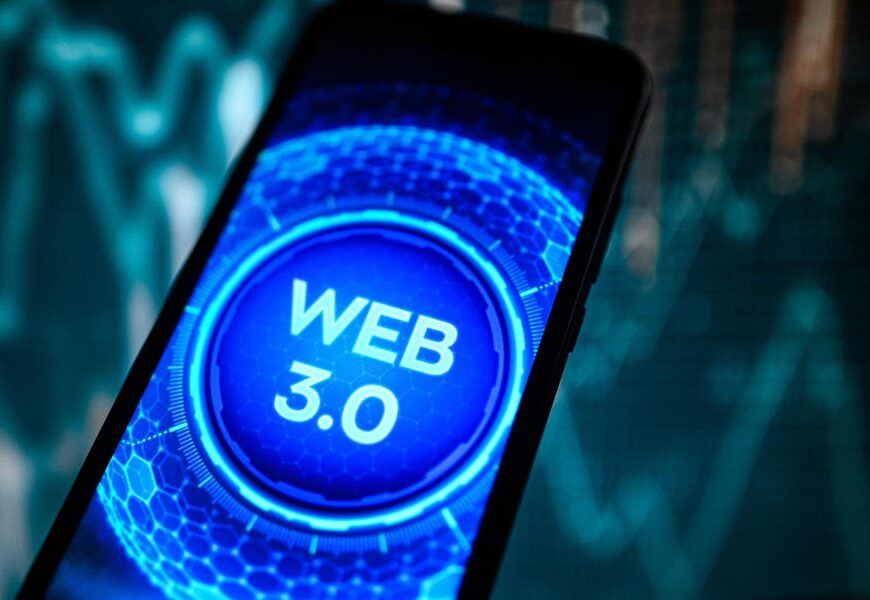The transition from the current iteration of the Internet, known as “Web2,” to the forthcoming generation, termed “Web3,” signifies a significant shift in how information is managed and overseen online. Web3, although lacking a universally accepted definition, generally embodies a decentralized online environment that harnesses blockchain technology to empower users with data control and diminish the dominance wielded by major tech corporations. This advancement aims to address concerns like privacy deficiencies, extensive surveillance, and the proliferation of misinformation stemming from a society driven by data consumption, where individuals often serve as commodities. Nevertheless, the progress of Web3 has been impeded by notable user resistance.
The fusion of artificial intelligence (AI) and blockchain technology holds the potential to propel the acceptance of Web3. The synergy between AI’s capacity to learn from data and make projections, along with blockchain’s transparent and tamper-resistant data processing capabilities, can enrich the user interface of Web3 and alleviate user reluctance. For instance, decentralized AI integrated with blockchain can offer users personalized online experiences, such as music recommendations based on their historical listening patterns, without necessitating the compromise of privacy or data autonomy.
Empowering Web3 with AI and Blockchain
Blockchain and AI serve as complementary technologies, each offering solutions to the challenges posed by the other. In the realm of AI, access to high-quality data is paramount for crafting effective and precise AI algorithms. AI trained on flawed data inevitably produces inaccurate outcomes, known as the “garbage-in, garbage-out” dilemma. Blockchain’s inherent consensus protocol, which dictates how blockchain nodes agree on data veracity, helps mitigate the “garbage-in, garbage-out” issue by enabling verification of data authenticity, accuracy, and integrity. It also aids in countering the consolidation of AI control within a few entities by distributing authority over data and algorithms. As Gary Gensler, the Securities and Exchange Commission Chair, highlighted in a recent podcast on AI and the financial sector, a scenario where numerous financial entities rely on a centralized data or decision-making model can pose risks to society and the financial domain at large. Through decentralized and distributed frameworks, blockchain platforms can be structured to distribute power in a manner that mitigates risks associated with a few AI entities making influential yet opaque determinations.
The Intersection of AI and Blockchain
Nonetheless, effectively harnessing the potential of AI and blockchain in unison is a complex endeavor that has required time to surmount technical obstacles. A valuable approach to tracking the concurrent development of these technologies involves delineating their progress through three phases: data (Phase 1), information (Phase 2), and knowledge (Phase 3). Fundamentally, data comprises raw alphanumeric values, while information denotes structured and organized data. Knowledge encapsulates the collective insights and deductions derived from information. Yet, extracting actionable insights from vast data and information repositories is challenging.
Until recently, the task of searching, indexing, and extracting data, especially across diverse formats like text, audio, and images, posed challenges due to blockchains’ initial lack of search optimization. However, entities like The Graph, often likened to the “Google of Web3,” have largely addressed the Phase 1 challenge of extracting indexable and searchable data from blockchains without relying on centralized intermediaries.
In Phase 2, companies with access to substantial blockchain data shifted focus to organizing this data into coherent, analyzable information. This proved challenging because while blockchains offer a public transaction record between wallet addresses, these addresses are intentionally challenging to trace back to real-world identities. Companies like Nansen have stepped in to bridge this gap, enabling the extraction of valuable insights from blockchain data for due diligence and analytical purposes.
Nevertheless, the next frontier, Phase 3, involves deriving knowledge from the wealth of information available on blockchain platforms. This challenge remains largely unaddressed, as meaningfully connecting disparate data and information pieces is both labor-intensive and manual. AI can serve as a potent tool to automate the formidable task of extracting, organizing, storing, and disseminating an organization’s collective knowledge.
AI’s Role in Driving Web3 Adoption Through Personalization
The surge in popularity of generative AI can be attributed to its ability to offer tailored experiences based on user inputs. Han Jin, CEO of Bluwhale, an AI-powered Web3 company, emphasized the necessity for the next wave of consumer-facing blockchain applications to match or exceed the user experiences offered by Web2 for Web3 to achieve mainstream success. Personalization is no longer a luxury but a requisite element. This approach enables decentralized applications to better engage existing users and attract new ones, optimizing marketing efforts.
Knowledge graphs, described by Jin as “a decentralized AI brain spanning across blockchains,” could be the missing link to translating the personalized experiences of Web2 into the Web3 landscape. These data science tools map relationships between various data elements, aiding in imparting meaning and structure to diverse datasets. Search engines commonly leverage knowledge graphs to enable computers to grasp the context of user queries and interlink billions of facts about individuals, locations, and objects.
However, akin to the core infrastructure of Web2, many knowledge graphs are constructed by centralized entities, confined to their respective organizations, and lack broad sharing capabilities. Decentralized knowledge graphs, exemplified by projects like OriginTrail, aim to democratize knowledge graphs by leveraging open, permissionless blockchain networks where the public can contribute, validate, and verify knowledge.
Building the Future Internet with Emerging Technologies
By leveraging advanced tools like knowledge graphs, the integration of AI and blockchain can lay the groundwork for a Web3 founded on trustworthy data. This decentralized Internet can help combat prevalent issues in our current centralized online landscape, such as disinformation, surveillance, privacy and security risks, and the erosion of personal data control.










